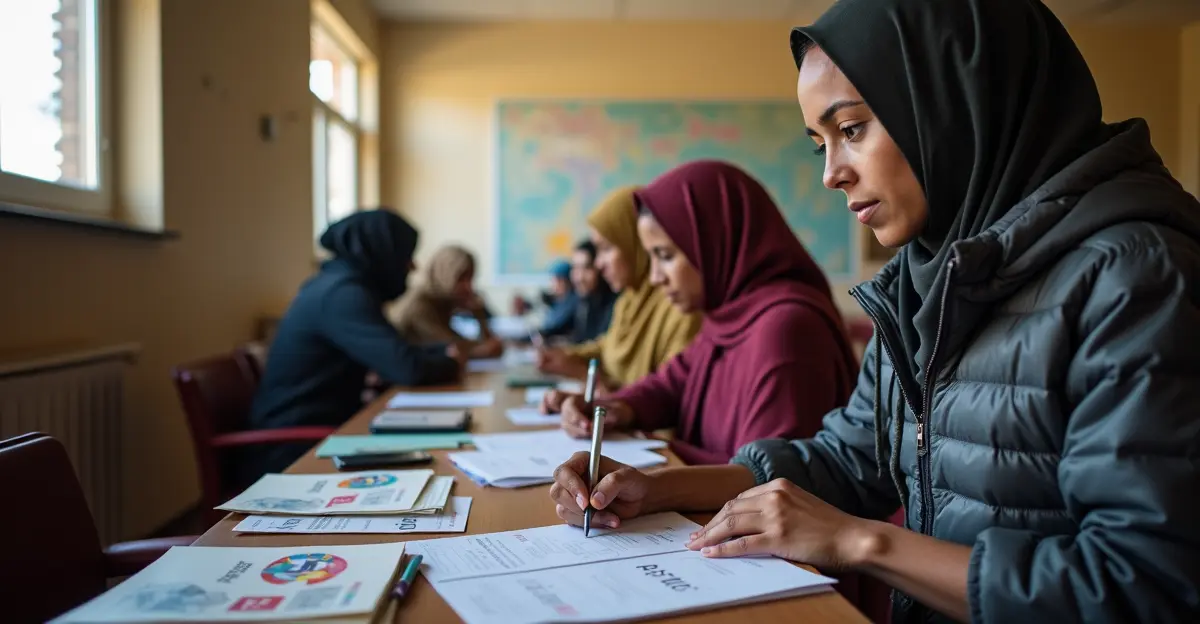A comprehensive refugee integration program linking workforce training with stable housing shows remarkable success in 2025, with employment rates increasing 45% and 78% of participants maintaining stable jobs and housing after two years.

Innovative Program Connects Employment and Housing for Refugees
A groundbreaking refugee integration pilot program is demonstrating remarkable success by linking workforce training with stable housing solutions, creating a comprehensive approach to refugee settlement that addresses both economic and social needs. The initiative, which has been gaining momentum throughout 2025, represents a significant shift in how governments and organizations approach refugee integration.
Comprehensive Approach to Integration
The program operates on the principle that successful integration requires addressing multiple aspects of refugee life simultaneously. 'We've learned that providing housing without employment opportunities creates dependency, while employment without stable housing leads to instability,' explains Maria Rodriguez, director of the integration program. 'By combining these elements, we're seeing refugees achieve self-sufficiency much faster.'
Recent data from European Commission reports show that countries implementing integrated approaches have seen refugee employment rates increase by up to 45% compared to traditional settlement methods. The program's success is particularly evident in Italy, where a June 2025 agreement between the government and tourism industry has created specialized training programs specifically designed for refugee employment.
Employer Incentives Driving Success
A key component of the program's effectiveness lies in its strategic use of employer incentives. Businesses participating in the initiative receive tax benefits, training subsidies, and access to a pool of motivated workers. 'The incentives make business sense while allowing us to contribute to social cohesion,' says Thomas Weber, CEO of a participating manufacturing company. 'Our refugee employees have proven to be incredibly dedicated and reliable.'
According to Tent Partnership research, companies that hire refugees report lower turnover rates and higher employee satisfaction. The program has successfully placed over 16,200 refugees in employment contracts in 2024 alone, representing a 38% increase from the previous year.
Housing as Foundation for Success
The housing component of the program ensures that refugees have stable living conditions while they complete training and transition into employment. Unlike traditional refugee housing, which often isolates newcomers from host communities, this program places refugees in mixed neighborhoods with access to public transportation, schools, and community centers.
'Housing stability is the foundation upon which everything else is built,' notes Dr. Sarah Johnson, a housing policy expert. 'When refugees have secure housing, they can focus on language acquisition, skills development, and building social networks.'
The program's housing strategy aligns with findings from Refugee Housing Solutions, which emphasize the importance of location and community integration in successful refugee settlement.
Measuring Success Through Multiple Metrics
Program administrators have developed comprehensive metrics to measure success beyond traditional employment statistics. These include social cohesion indicators, language proficiency progression, community participation rates, and long-term housing stability. 'We're not just counting jobs filled; we're measuring how well refugees are integrating into their new communities,' explains program evaluator David Chen.
The evaluation framework, detailed in UNHCR's 2025 evaluation brief, tracks participants for up to three years to assess long-term integration success. Early results show that 78% of program participants maintain stable employment and housing after two years, compared to 45% in traditional integration programs.
Scaling Best Practices
As the program demonstrates success, governments and organizations are working to scale these best practices. The approach has gained particular traction in addressing labor shortages in key sectors like healthcare, construction, and hospitality. 'This isn't just about humanitarian assistance; it's about smart economic policy,' states integration policy advisor Lisa Martinez. 'We're addressing workforce needs while helping people rebuild their lives.'
Research from Africa International University supports this approach, demonstrating that workforce development initiatives represent both moral duty and intelligent economic strategy. The study highlights how targeted vocational programs can transform temporary settlements into sustainable economic hubs.
The program's success in creating mutual benefits for both refugees and host communities has prompted discussions about expanding similar initiatives globally. With proper funding and political support, this integrated approach could become the new standard for refugee integration worldwide.

 Nederlands
Nederlands
 English
English
 Deutsch
Deutsch
 Français
Français
 Español
Español
 Português
Português









